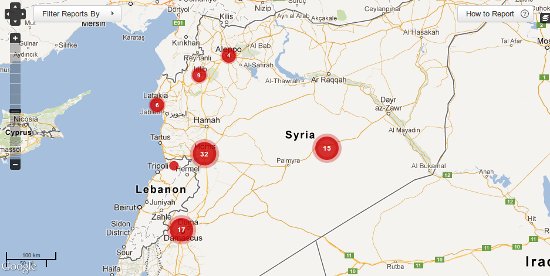
Women’s Media Center’s Women Under Siege Director Lauren Wolfe released a report last week on the initial findings of the project, with data revealing that the consequences of rape and sexualized violence during the Syrian conflict have ranged from pregnancy to sexually transmitted diseases to depression. Of the 117 separate pieces of data identified by the team of academics and epidemiologists working on the project, 80 percent include female victims, of whom 89 percent reported rape.
The reports vary widely, with some describing atrocities such as the use of drugs to paralyse victims, whilst a disturbingly high 42 percent testify to gang rape and 20 per cent of attacks left the victim dead. Many reports mention multiple victims; one, for example, describes the rape of 36 women by government forces.
Wolfe explains that reporting on such atrocities as the conflict unfolds is extremely problematic, so every report is currently classified as “unverified”, but, she explains, “Our hope is that when things calm down, we’ll be able to do on-the-ground reporting and really triangulate each story.” In the meantime, the findings are corroborated by similar reports in the news and from contacts in the country. Wolfe says:
We’ve been able to confirm a few patterns we’ve seen with human rights organizations, including the rape of women at checkpoints, the violation of women who are brought to jails to be raped in front of their husbands, and the rape of the male detainees themselves. And we’ve see many devastating reports of entire towns being bombed and then looted and raped.
And though these new methods of gathering data make it harder to verify facts, she points out that:
Making an open, anonymous way of reporting is crucial to gathering stories of sexualized violence in conflict. It removes the potential stigma and shame attached to rape, and allows an unburdening.
Helping survivors, building peace
The project by no means represents the whole picture of the Syrian conflict, but if it can help peacebuilders and NGO’s to identify particularly badly hit areas, they may be able to use it to focus post-conflict capacity building, by strengthening medical, judicial and psychosocial resources where they are most needed.
The Inter-Agency Standing Committee Guidelines on Gender-Based Violence Interventions in Humanitarian Settings stress the importance of involving the local community in all areas, and building on existing local resources to ensure that measures taken against sexualized violence are owned and led by the affected people themselves.
By allowing these stories to be heard, and giving survivors an anonymous voice, we are taking an important step towards an openness and awareness of the problem, which could help peacebuilders pursue such a community-led approach post-conflict.
Another important function of the map is its facility to ensure that the voices of all survivors are heard, and the complex scope of the problem fully recognised. It is important, for example, to understand that not all victims of sexualized violence are women – 24 of the incidents on the crowdmap involve male victims.
Bringing perpetrators to justice
The map works towards future justice by allowing victims to identify perpetrators who are members of specific militia or armed groups. Government perpetrators are the most widely identified, with 61 per cent of attacks attributed to them and a further 6 per cent by shabiha (plainclothes militia) and government forces working together. Though it is too early to determine at this stage whether rape is being used by government forces as a strategic tool of war, the reports certainly suggest the intimidation and terrorisation of communities using the weapon of sexualized violence.
When dealing with a crime so tightly bound up in ideas of ‘honour’ and stigma, any initiative that encourages speaking out about the problem, reporting it, denouncing it and placing blame firmly on perpetrators rather than victims, is a step in the right direction. It is vital that we strive to raise awareness, and to end the devastating culture of impunity that often surrounds wartime rape. As Wolfe quite rightly says, “In every way, rape is a human rights problem, not a ‘women’s problem.’ And until we see it that way, we’re going to remain stuck picking up the pieces of lives torn apart by this.”









